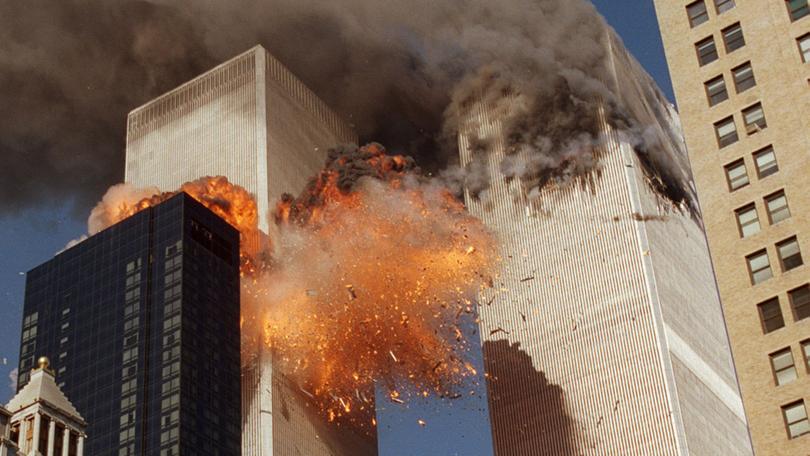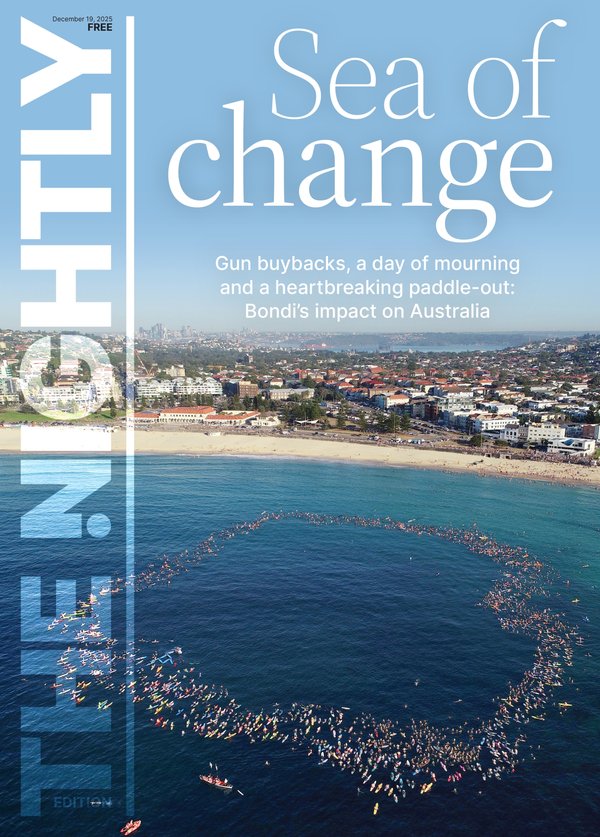THE NEW YORK TIMES: The 9/11 defendants were captured two decades ago. Why hasn’t a trial started?

GUANTÁNAMO BAY, Cuba — The five men who are accused of conspiring in the Sept. 11, 2001, attacks were captured two decades ago, but a trial is still unlikely to start before 2026.
Instead, the death penalty case has been delayed repeatedly.
An entire generation of Americans has no memory of the attacks, which killed nearly 3,000 people, or the creation of the Pentagon prison and court at Guantánamo Bay in Cuba. Critical witnesses have died, and others have fading memories.
Sign up to The Nightly's newsletters.
Get the first look at the digital newspaper, curated daily stories and breaking headlines delivered to your inbox.
By continuing you agree to our Terms and Privacy Policy.Prosecutors say the defense lawyers are trying to derail the trial or avert the death penalty by exploring every possible avenue in the case. Defense lawyers have accused prosecutors of using national security concerns to prevent turning over evidence.
Both are true. But more fundamental decisions and problems stand in the way of a trial.
The government wanted to try the men together.
The five men were charged together, meaning an issue involving one would dictate the pace of the trial for the others. The lead defendant, Khalid Sheikh Mohammed, is accused of being the mastermind of the plot and proposing it to Osama bin Laden. Two other men are accused of helping some of the hijackers with finances and wire transfers.
For years, prosecutors were devoted to the idea of a one-and-done trial rather than trying the men separately. In 2023, however, a medical panel concluded that one defendant, Ramzi Binalshibh, was not competent to stand, and a judge severed his case.
Now the case has four defendants, each with his own team of lawyers.
Three of them, Mohammed, Mustafa al-Hawsawi and Walid bin Attash, negotiated an agreement with prosecutors to plead guilty in exchange for life sentences. But Defense Secretary Lloyd Austin rescinded it.
Now the judge has to sort out whether Austin’s action was lawful, and whether the four will be tried together.
Torture has dominated the hearings.
After the men were captured in Pakistan in 2002 and 2003, the Bush administration held them in secret overseas prisons run by the CIA, where they were tortured.
The United States was trying to find bin Laden and uncover other terrorist plots, and it put interrogating the men ahead of their basic rights.
They were denied access to lawyers, the International Red Cross and U.S. courts while they were held — at times in dungeonlike conditions — and brutally interrogated while held naked, beaten and deprived of sleep. Two were waterboarded.
Pretrial hearings in the early years focused on what information and which witnesses the defense lawyers could question from that program, and which evidence could be made public. Those questions have not been entirely resolved, but lawyers for both sides have been calling witnesses on a crucial overarching question: Are the interrogations of the defendants in 2007, the government’s best evidence in the case, too tainted by torture to be used at their trial?
President George W. Bush sent the defendants to Guantánamo Bay.
The Bush administration chose to put the defendants on trial at the U.S. Navy base in southeast Cuba, which the United States has leased as an offshore facility for more than a century.
The Pentagon built a new national security court there, with military judges presiding and military officers mobilized from around the globe to serve on juries.
The CIA and the government control the details of the defendants’ first years of detention and their interrogations and keep some of them from the defendants’ lawyers, who obtain sensitive, high-level security clearances to represent them.
The intelligence community has changed the rules repeatedly on how to handle classified information, causing court closures, confusion and delays.
The public listens to the open court on a 40-second audio delay, to prevent state secrets from slipping out. Even after that, censors protecting the interests of both the CIA and the Defense Department redact portions of transcripts of open hearings that they believe the public should not have heard. Both processes have slowed progress.
It’s a commuter court, requiring special flights.
Only the defendants live at Guantánamo. For each hearing, the Pentagon charters an airplane to fly everyone else, including the judge, to the base. The commuters routinely include prosecutors, defense lawyers, witnesses, stenographers, court security officers and translators — as well as relatives of people who were killed in the Sept. 11 attacks, who watch the proceedings as guests of the prosecution. Journalists are required to commute to the court that way too, but pay their own way.
Travel to Guantánamo requires a special document, something akin to a visa, a government identification card or passport — and a ferry ride across the bay to reach the court complex. Weather can be a hindrance to the flights and the ferry.
Every time they arrive, the travelers must check in at a security zone, which is called Camp Justice. They are issued room keys, often to trailer park housing, and security identification cards and vehicles for those on the government payroll.
Staffing constantly changes at the court and prison.
The guards who work at the court and prison are mostly National Guard troops mobilized from civilian life. They serve nine-month stints. The prison commanders change every year. The rules can change with military staff rotations, causing more court delays and other disruptions.
A new commander recently reinstated a rule requiring prison guards to shackle each prisoner by the ankle to the floor of the cells used for legal meetings. The judge ordered the prisoners unshackled at the court compound during weeks of pretrial hearings, absent emergency circumstances.
The current judge, Col. Matthew N. McCall, is the fourth military judge to preside in hearings in the case at Guantánamo Bay. But at least seven have been assigned to it since arraignment in 2012, because, unlike in federal court, military judges typically serve stints on the bench and then move on to other legal assignments. Some have served as caretaker judges during the suspension of hearings. One stepped down after discovering he had conflicts of interest.
McCall will retire before any trial begins next year. The next judge will have to review more than 50,000 pages of transcripts, some of them classified, and tens of thousands of pages of court filings.
Floods and noise contribute to delays.
The courthouse facilities have been built in stages since 2007 on a cracked tarmac on an abandoned airfield. When it rains, the court compound floods and noise on the metal roof of the courtroom has drowned out the proceedings, forcing delays. Mould and other infestations are a constant concern in the sticky Caribbean climate.
Hurricanes, communications failures and the coronavirus have also forced cancellations and postponements.
One morning this summer, the court’s water, phone lines and classified computer network all went down. The air conditioning malfunctioned, and mould could be seen spreading across a vent in a new jumbo trailer containing a media centre. By afternoon, residents on the base were told to boil the tap water they wanted to consume because of low line pressure possibly contaminating the water supply. Court was then cancelled for the next two days because the lead defendant had the coronavirus.
Health care is a constant concern.
Guantánamo has limited health care, and anyone with a serious issue must be medically evacuated. In 2019, a hearing abruptly ended when doctors at the base’s hospital discovered that the judge’s retina was detaching; he was taken by medevac to Miami.
Progress was often derailed for years by outbursts by one defendant, Binalshibh, who was severed from the case in 2023. He is still technically charged, but a military medical panel ruled him unfit to face trial because of his post-traumatic stress disorder and other ailments, which his lawyers say are triggered by memories of mistreatment in CIA custody.
The coronavirus forced suspensions.
All hearings were suspended for about 500 days from the start of the coronavirus pandemic in early 2020. They did not effectively restart until September 2023 for two reasons. Experts appointed by the judge were assessing Binalshibh’s capacity to participate in his defense. During the same period, in March 2022, prosecutors initiated plea talks with the defendants, prompting the judge to suspend the hearings to allow talks to take place in the courtroom.
It’s a capital case.
Capital cases take longer to prepare because, if the defendants are convicted, a mini-trial follows to decide whether a death sentence is appropriate. Factors such as a defendant’s background, upbringing and conditions of custody all figure into trial preparation.
Defense lawyers have pursued the most graphic details of the prisoners’ time in CIA custody to present to a jury if the case reaches sentencing. The defense also continues to seek testimony from CIA employees; the government has declared that their identities are protected by a national security privilege.
“All we have to do is persuade one juror that one piece of information is sufficient for them to vote for life,” Rita Radostitz, a defense lawyer, told the judge on Sept. 11, 2019.
This article originally appeared in The New York Times.
© 2024 The New York Times Company
Originally published on The New York Times
